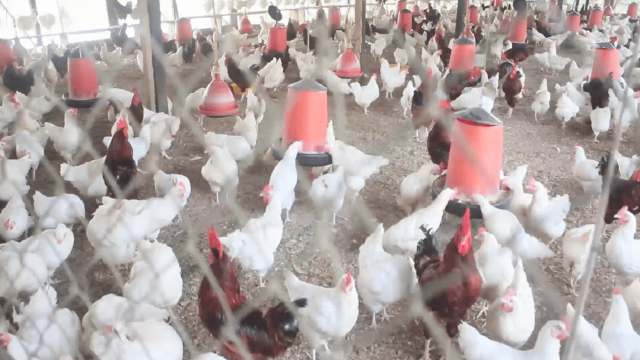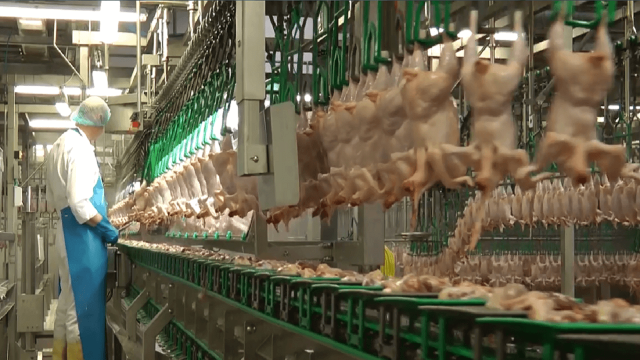
Marketing of Eggs and Poultry Meat
May 25, 2021, 10:59 am
Marketing of eggs is one of the determinative factors for the success of a poultry business. It is of utmost importance to have a good insight into the marketing conditions before you start the poultry farming business.
Marketing of Eggs and Poultry Meat
This can be obtained through preliminary market research followed by a study of market developments even as the business is in full operation. Marketing is more than just selling and marketing research is more than just collecting government statistics about production and consumption.
Poultry Marketing Supply and Demand Cycle
Both at the start and later on, it is necessary to know how supply and demand develop over a long period of time in the operating area where your poultry farming business is involved. As far as demand is concerned, population growth, especially buying power and disposable income developments, are determinative factors for assessing the marketing opportunities in the future.
The level and scale of production in a given area is seldom stable over a long period. First, climatic changes may affect productivity, either seasonally or incidentally e.g. sudden hot periods. However, in many cases economic factors are responsible for changes in the level and scale of production. Availability of feedstuff, and the level of feed prices, can fluctuate considerably.
On the other hand, the size of demand also changes or fluctuates in course of time. In this respect you must think of differences in availability and price level of alternative food protein sources such as fish and red meat, and seasonal changes in eating habits. Even in the absence of direct influences from outside, a cyclic pattern of prices can be observed. When the prices are high, many poultry producers will react by expanding their production. This in turn will cause a temporary overproduction leading to lowering of prices which eventually may go below the cost of production, a situation which will again make the producers decrease their output. As soon as the supply fails to meet the demand, the whole cycle repeats itself.
Once you understand how the market as a whole function, it would be advisable to find out how your products are doing in the market compared to those of a competitor, and also find out how to improve your own marketing arrangements.
Poultry Marketing Channels
There are two major poultry marketing channels:
- Direct sales to the consumers or to consumer centers such as hotels, restaurants and retail shops
- Marketing through middlemen (wholesale)
Generally, large poultry farming businesses are nearly found near urban populations centers, obviously because there is a ready market for eggs and meat. Consequently, feed manufacturing factories to are mostly found near these population centers.
Whichever marketing channel is chosen, there must be an adequate infrastructure to enable you to market your products in the most efficient way. Good roads and other means of communications are a necessity for effective transport and distribution of products to the markets.
Seasonal changes in supply and demand, and consequently in the price level, may partly be met by using storage and preservation facilities, but the costs of such facilities should not be underestimated.
Sales Promotions
The usual form of sales promotion consists of advertising and merchandising in order to draw the attention of the consumer to the products. In some cases, it may be wise to support the sales outlets by providing them with special storage equipment such as refrigerator and deep freezers. But the best way of promoting sales is by ensuring regular supply, excellent quality and an attractive presentation.
In order to maintain fairly constant supply throughout the year, it is necessary to plan thoroughly and be equipped to meet all unavoidable production disturbances. Some major fluctuations in level of production may be unavoidable, but climate control and hygiene measures must be of such a degree that climatic disturbances and serious outbreaks of diseases causing mortality and drop of production, can be prevented.

The products must be adapted to the needs and preferences of the consumers, both in quality and presentation. The time when eggs were sold in baskets filled with straw or in cardboard fillers, is definitely over. In modern large laying units, eggs are graded into size or weight classes and arranged in order to sort out cracked eggs and eggs with blood and meat spots. These quality graded eggs are sold in trays containing 30 egg, or in boxes with 360 eggs. Nowadays transparent plastic packs with 10 eggs or cardboard packs with 6 eggs are being used increasingly. Although the latter may cost more, they certainly meet the demands of the consumers, and therefore increase sales.

Apart from grading and packing, there might be other consumer preferences such as choice of brown eggs instead of white eggs or in the case of broilers, white colored skin instead of yellow. Of course, you must always cater to the customer preferences.
Above all the customer wants fresh and unspoiled products. Storage and packing are the most important factors in this respect. Eggs should be stored in a cold environment. In smaller shops storage conditions may be poor but an increasing number of retail shops, especially large supermarkets are giving more attention to suitable storage conditions. The eggs should not be stored too long, especially in hot climatic zones. Delivery therefore should take place at least once a week, if not more frequently.

Eggs from smaller units are often sold ungraded and unpacked to wholesalers. These middlemen transfer the eggs to retailers. Such a marketing situation is less favorable to the producers. When prices go up, a larger proportion of the profits may go to the wholesalers, whereas, when prices go down, a large part of the decline will be borne by the producers. Monopolistic situations in which a few traders may dominate the market should be prevented.
Marketing of Poultry Meat
In the poultry market, a choice must be made between marketing birds alive or slaughtered. Selling live broilers is of course a certain way of providing the customer with a fresh product and therefore this method of marketing is preferred in many countries. The consumer has the opportunity to choose the bird he or she prefers, and to take it away for slaughtering.
However, it is also a practice to let the birds to be slaughtered at the spot, under hygienic conditions. Official slaughter houses provide chilled fresh chicken meat, either as whole chicken or cut-up in portions (chicken parts) when this method is chosen, the way of packing is of great importance.
The wrapping should not only be attractive and colorful on the outside, but it must also contribute to the freshness and cleanness of the packet meat inside the package. A well-presented table bird has an obvious advantage in the market.
All poultry meat are potential carriers of micro-organisms. Thus microbial spoilage usually occurs in 4 to 10 days after slaughtering, depending on the way of handling the broilers at the processing plant and the type of micro-organisms involved. Even when the meat is kept at temperature from 0 to 4°C, microbial spoilage goes on, though at a slower rate. The storage temperature should be around 0°C or lower.
Wrapping in polyethylene bags does not hinder microbial spoilage because this material has high oxygen permeability. Impermeable wrapping would be better. Under these circumstances building of carbon dioxide (CO2) occurs, which inhibits the activity of the aerobe microflora, thus prolonging the good condition of the wrapped meat. Unfortunately, this wrapping material might be too expensive.
Adding value to the primary product will certainly contribute to an easier way of marketing. Fast food, cooked or fried chicken snacks can increase consumption and thus improve the market possibilities of chicken meat. It must always be kept in mind that the image of the product and of the producing company are determinative factors for your chances of success in the market.

Before you can effectively market and get good prices for your poultry eggs and meat, you need to know how to raise them properly. Having well-raised poultry birds is the foundation for successful marketing.
If you need insights and knowledge for effective poultry farming, our poultry farming business plan and online poultry farming training will show how to start a poultry farm with 2,000 birds and grow it to over 5,000 birds. It will show you all the materials you need to get, how to reduce death rate on your farm (medication and vaccination plan guide), the best way to build your poultry house so that they lay more eggs, what you should feed your birds so as to reduce feeding costs, expected profits, balance sheet and cash flow for 5 year's of operation and so much more!
For a payment of N50,000 we will send you our professional poultry farming business plan containing the latest and current prices needed for starting a poultry farming business (layers and broilers) and also give you one month access to our online poultry farming training course. Our professional poultry farming business plan also comes with architectural and structural drawings and design for building a modern poultry farming pen that can house 2,000 birds.
To learn more about how to get our poultry farming business plan and online training, please call or chat with us on +2348089864121 or send a mail to agsolutions@agricdemy.com












Share This Article: